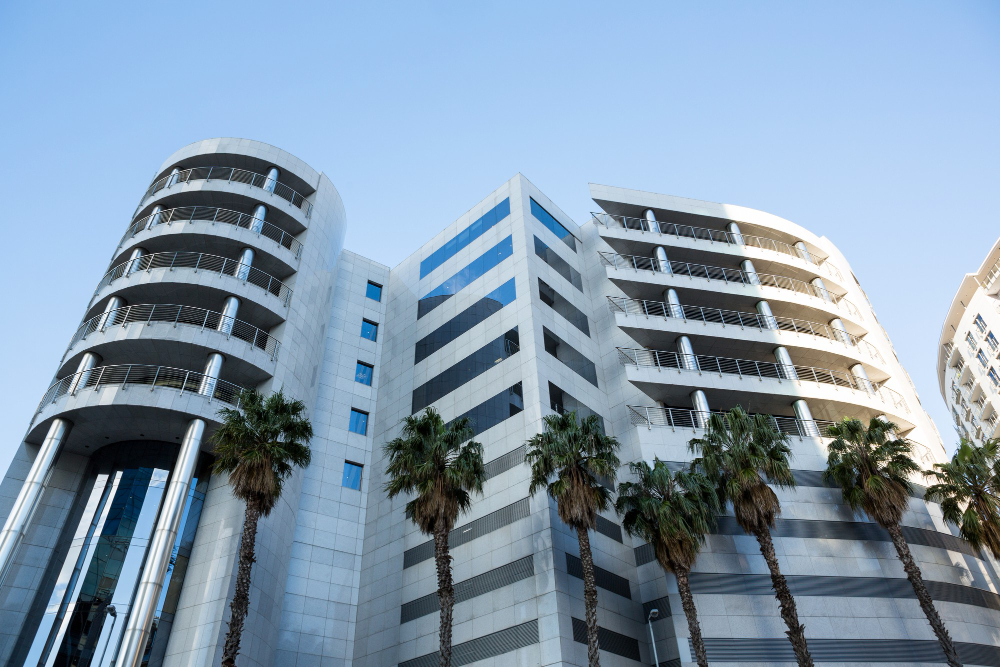Commercial real estate plays a significant role in the economy and can be a highly lucrative field for both investors and business owners. As a complex and multifaceted sector, understanding the various components of commercial real estate and how it operates is crucial for anyone interested in exploring this field. In this article, we will dive deep into what commercial real estate is, the different types of properties it includes, how transactions take place, and the factors that influence the market.
What is Commercial Real Estate?
Commercial real estate refers to any property that is used primarily for business purposes, rather than residential living. This includes office buildings, retail spaces, industrial warehouses, and other types of properties that generate income for their owners. The primary difference between residential and commercial real estate lies in the intended use of the property. While residential properties are used for living purposes, commercial properties are used to generate profit, either through rental income, the sale of goods, or the provision of services.
In its simplest form, commercial real estate serves as the foundation for businesses to operate, providing the physical spaces needed for companies to perform their day-to-day activities. Whether it’s a small office building, a large shopping mall, or an industrial complex, commercial real estate serves as the backbone of many business ventures.
Types of Commercial Real Estate
The commercial real estate market is vast and diverse, encompassing a wide range of property types, each with its own unique characteristics and uses. Let’s take a closer look at the primary categories within the commercial real estate sector.
Office Buildings
Office buildings are one of the most common types of commercial real estate. These buildings are typically leased out to businesses that require a space to conduct their operations, such as law firms, tech startups, financial companies, and other professional services. Office spaces are often categorized into three classes:
- Class A: These are the highest quality buildings, located in prime locations, and often feature top-tier amenities and modern infrastructure.
- Class B: Buildings in this category are usually older but still offer good quality and are located in decent areas. They might require some renovations but are often more affordable.
- Class C: These buildings are typically older and may need significant repairs or upgrades. They are usually in less desirable locations but can provide opportunities for investors looking for properties to renovate.
Retail Properties
Retail properties include shopping centers, malls, standalone stores, and restaurants. These spaces are typically leased to businesses that sell goods or provide services directly to consumers. Retail properties can be large and sprawling, like regional malls, or smaller, neighborhood strip centers. The success of retail properties is often dependent on consumer foot traffic and the location of the property, which is why retail spaces are often located in high-traffic areas.
Industrial Real Estate

Industrial real estate refers to properties that are used for manufacturing, distribution, and storage purposes. This category includes warehouses, distribution centers, factories, and other types of facilities where goods are produced or stored before being distributed to retail locations or directly to customers. Industrial real estate has become increasingly important with the rise of e-commerce and the demand for efficient supply chain management.
Multi-Family Properties
Multi-family properties, such as apartment buildings and condominiums, are residential properties that consist of multiple units but are classified as commercial real estate when they are intended for rental income rather than owner-occupancy. These properties can range from small duplexes to large apartment complexes and are often sought after by investors because they provide a steady stream of rental income.
Hospitality Properties
Hospitality properties encompass hotels, motels, resorts, and other types of accommodation facilities. These properties cater to travelers and tourists, offering short-term lodging options. The hospitality sector is highly sensitive to economic conditions, with travel and tourism being directly impacted by factors such as economic downturns, natural disasters, and global pandemics.
How Does Commercial Real Estate Work?
The workings of commercial real estate involve a variety of processes, from buying and selling properties to leasing spaces to tenants. Investors and business owners need to understand the dynamics of the market, the different parties involved, and the financial aspects of commercial real estate transactions.
Buying and Selling Commercial Real Estate
The process of buying and selling commercial real estate is relatively straightforward but requires significant expertise. Potential buyers must first conduct thorough market research to identify properties that align with their investment goals. Once a property is identified, a buyer will typically need to secure financing, often through commercial real estate loans. These loans differ from residential mortgages in terms of their terms, interest rates, and down payment requirements.
Once the financing is in place, buyers and sellers will negotiate the terms of the sale, including the price, contingencies, and closing conditions. After reaching an agreement, the transaction proceeds to closing, where the ownership of the property is officially transferred.
Leasing Commercial Real Estate
Leasing is another common aspect of commercial real estate, where property owners lease space to businesses or individuals who wish to occupy it. Commercial leases can vary greatly in terms of structure, length, and pricing, but they generally fall into one of three categories:
- Gross Lease: The tenant pays a fixed rent amount, and the landlord covers the operating expenses of the building, such as taxes, insurance, and maintenance.
- Net Lease: In a net lease, the tenant is responsible for some or all of the property’s operating expenses, in addition to the rent. There are different types of net leases, including single-net, double-net, and triple-net leases, depending on the expenses the tenant assumes.
- Percentage Lease: Often used for retail properties, a percentage lease involves the tenant paying a base rent plus a percentage of the business’s sales, typically above a certain threshold.
Understanding the terms of a lease agreement is crucial for both landlords and tenants, as it sets the framework for the duration and financial obligations of the lease.
The Role of Commercial Real Estate Brokers
Commercial real estate brokers are professionals who help buyers, sellers, landlords, and tenants navigate the complex world of commercial real estate transactions. They provide valuable insight into the market, assist with property valuations, and negotiate deals. Brokers typically specialize in one or more types of commercial real estate and can help clients identify properties that meet their specific needs.
There are two main types of commercial real estate brokers:
- Listing Brokers: These brokers represent the seller or landlord and help market the property to potential buyers or tenants.
- Tenant or Buyer Brokers: These brokers represent the tenant or buyer and assist them in finding suitable properties and negotiating favorable lease or purchase terms.
Property Management in Commercial Real Estate
Property management is another essential aspect of commercial real estate. Property managers are responsible for overseeing the daily operations of commercial properties, ensuring that they are maintained, safe, and operating efficiently. For owners, hiring a property manager can alleviate the stress of dealing with tenants, handling repairs, and ensuring the property complies with all regulations.
A good property manager will handle everything from tenant relations to maintenance and repairs, while also ensuring that the property stays profitable. For tenants, a responsive property manager can make the leasing experience more seamless, addressing any issues or concerns promptly.
Factors Affecting Commercial Real Estate
Several factors influence the commercial real estate market, and understanding these factors can help investors make informed decisions. Here are some of the key drivers that affect commercial real estate:
Economic Conditions
The overall state of the economy has a significant impact on commercial real estate. During periods of economic growth, businesses expand, and demand for commercial space increases. Conversely, during economic downturns, businesses may downsize, and vacancies may rise. Additionally, interest rates, inflation, and job growth all play a crucial role in shaping the demand for commercial properties.
Location and Demographics
The location of a property is one of the most important factors in determining its value. Properties in prime locations with high visibility and foot traffic are generally more valuable than those located in less desirable areas. Demographics also play a significant role; for example, an area with a growing population and strong income levels may be more attractive to retail and office tenants.
Market Trends and Competition
The commercial real estate market is constantly evolving, with trends shifting over time. For instance, in recent years, there has been a surge in demand for warehouse and distribution centers due to the rise of e-commerce. At the same time, the demand for traditional retail spaces has declined, as more consumers shop online. Understanding market trends and staying ahead of shifts in the industry can help investors identify profitable opportunities.
The Risks and Rewards of Commercial Real Estate
Investing in commercial real estate can be highly rewarding, but it comes with its share of risks. Factors such as market fluctuations, vacancies, property maintenance, and changes in tenant demand can impact an investor’s return on investment. However, with proper due diligence, strategic planning, and a long-term outlook, investors can enjoy substantial rewards from owning and managing commercial properties.
In addition to rental income, commercial real estate can appreciate over time, providing investors with the opportunity to sell properties for a profit. Furthermore, real estate investments can serve as a hedge against inflation, as rents and property values typically rise with the cost of living.
Commercial real estate
Commercial real estate is a dynamic and complex industry that plays a vital role in the global economy. From office buildings to industrial warehouses, the various types of commercial properties offer opportunities for business owners, investors, and entrepreneurs alike. By understanding the fundamentals of how commercial real estate works, the types of properties involved, and the factors that affect the market, individuals can make informed decisions and navigate the real estate world with confidence.
Whether you’re looking to invest in commercial real estate or simply want to better understand the industry, this article has provided a solid foundation to help you succeed in this exciting field.

